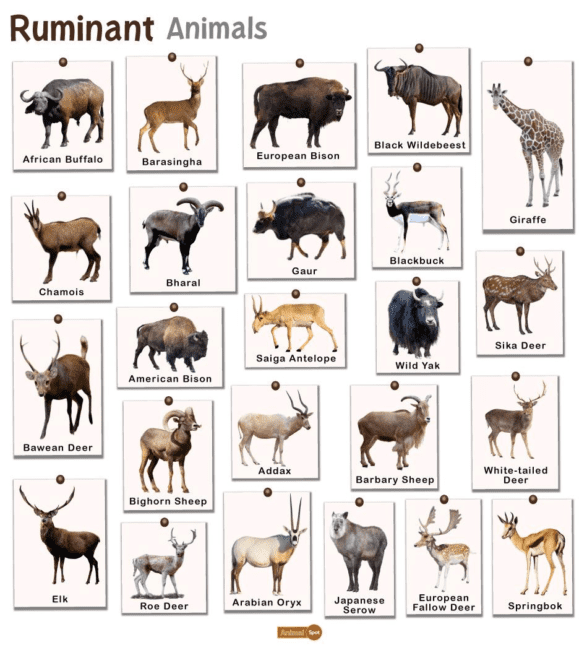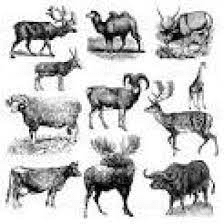Some farmers always ask me; How many ruminant animals do you recommend that I start my farm with? Well, the number of ruminant animals you can start with largely depends on your capacity in terms of space and finances.
Mostly, money spent on ruminant farm is spent on their housing and purchase of foundation stock. Their feeds are relatively cheap because they do well on grasses mainly and then concentrates.
Therefore, count the cost of housing and then purchasing the animals also budget some funds for feeding and with that, you can decide on which number to start with.
However, starting on a large scale will definitely necessitate the involvement of an expert. So I also recommend that you carry an expert along if you intend starting on a large scale.
There are few already established ruminant farms where the ruminant animals you need to start your farm with can be purchased as of now.
However, sources of getting these animals vary from villages (especially sheep and goat), nomadic Fulani, Research Institutes for example: I.A.R &T, I.I.T.A etc. and also already established farms. These animals can also be imported.
Any of these sources could give you a very good stock provided the animals are properly selected. So, from whatever sources, it is good that adequate information is gathered about them before going ahead to purchase them.
Read Also: Popular Breeds of Ruminant Animals
Livestock farming can simply be defined as the raising of animals for use or for pleasure. Livestock animals includes both beef and dairy cattle, pigs, sheep, goats, horses, mules, asses, buffalo, and camels; the raising of birds commercially for meat or eggs i.e., chickens, turkeys, ducks, geese, guinea fowl, and squabs is treated separately and us generally known as poultry farming.
Meanwhile, the livestock species play very important economic, social and cultural roles or functions for rural households once they contribute to improve income and wellbeing of the farm family.
Livestock helps on food supply, family nutrition, family income, asset savings, soil productivity, livelihoods, transport, agricultural traction, agricultural diversification and sustainable agricultural production, family and community employment, ritual purposes and social status.
Livestock has an important contribution for food supply of rural and urban areas and contributes to the family nutrition, supplying animal protein. As household income increases, the consumption of protein increases, principally from animal origin, allowing the substitution of vegetal by animal protein.
Besides milk, eggs and meat used as a source of food, other livestock products are used for domestic consumption and local sale such as skins, hides and horns.
Livestock production is closely interrelated with crop production. The use of livestock and its sub product manure are important in crop production. Livestock is a source of energy providing draught animal power while manure improves soil structure and fertility as well as water retention.
Both uses are environmentally friendly improving energy and nutrient cycling. Livestock is also used to transport agricultural inputs and outputs and people.
Livestock production is an important mean of exchange between rural households and, when sold, contributes to boost and strengthen rural markets.
Rural markets are an important piece in the operation mode of rural communities and a significant contribution for rural families’ wellbeing and wealth.
Advantages of Livestock Farming
Livestock farming is such a profitable farming for the farmers as they gain huge amount of profits from this.
It helps them to generate revenue from various sources including leather export, Meat and other Livestock products. It also provides jobs and works in the rural areas.
Disadvantage of Livestock Farming
One of the major disadvantage is inhumane behavior. Animals are locked in the cages in small spaces and finally, they are killed.
Apart from that to manage all the animals it requires a huge amount of labor which can be costly for the farmers.
Livestock farming business is not an easy task to start as it required huge amount of money to start this business.
In general, you can start small with what you have and with where you are. It’s always good to dream big and even if for some reasons you have all the resources you need, its always best to start small before diving in, that way you can learn the ropes of the business gradually, manage losses and learn how to grow the business.
You can start with half a dozen animals and then expand after learning their feeding habits, their output, feed consumption and other related factors. As a beginner, experimenting with few animals first before going big is a mark of prudence.
Focus on efficiency and run your farm like you would run any other business. Focus on increasing productivity of the animals and reducing anything that does not contribute to the growth of the business.
Read Also: Measures of Improving Field Crops Production in Nigeria
General Considerations on Keeping Animals

Our consumption of animal products is generally increasing on a global level. At the same time, we face severe challenges related to climate change.
We have to realize that every time we produce a kilogram of animal meat or a liter of milk, we have used much more energy and resources in terms of feed and water than we get out of it.
This will be discussed in more details in another place, but these also have to be considered on household level: when you compose a healthy diet for your family, animal products can add valuable nutrients but it is not healthy in high amounts, and you have to use more feed and more water to produce a smaller amount of animal products.
This is also about thinking a well-balanced integration into your farm e.g. it is recommended in some parts of the world that adults should not have more than 3 eggs per week.
FAO states that meat is not an essential part of a human diet, but humans have a need for 50-60 g. protein per day which needs to be covered, but not necessarily by meat. Some sources recommend that humans eat not more than 200-300 g meat per week.
The energy and water footprint of animal products is also considerably much more than e.g. vegetables.
Critical Aspects to Consider
There are several reasons for taking up animal husbandry as a small or central part of your farming activities. There are also a number of critical aspects which you need to consider. In order to make a decision on whether and how to get involved in animal husbandry, you should ask yourself a number of questions:
1. Is my farm suitable? Do I have sufficient space for shedding and grazing? How many animals can this farm sustain? Are there any particular risks for keeping animals in this area? Is water available? Does infrastructure support e.g. transport of products from my animals to the market, if relevant?
2. Will I find a market for the products? Does anyone want to buy my milk, eggs, meat etc.? Is the price worth the effort? Can I work together with other farmers in the area to get better bargaining power when selling our products? Can I produce of a sufficient quality which is suitable for the market?
3. Will the animals benefit my farm? Can I use the dung in a suitable way? Will I get products for my own consumption or sales? Will the animals somehow affect my crops?
4. Can I get the necessary inputs? Is sufficient labour available within or outside my farm? Is enough fodder and water of good quality available throughout the year, especially in periods of scarcity (dry seasons or during droughts)? Will remedies and veterinary support be available, if needed? Can I get suitable breeds of animals? Which knowledge do I need on these issues, and can we get that?
How Many Animals can my Farm Sustain?
In tropical countries, farm animals are frequently found to be underfed. When defining the number of farm animals, keep in mind that the economical benefit will be higher when fewer well fed animals are kept. Keep in mind that not only the amount, but also the quality of the available food must be taken into consideration.
In order to identify the appropriate number of a specific kind of animal on a farm, you should consider the following:
- Do we have sufficient amount and quality of feed on this farm, especially in periods of scarcity (e.g. dry seasons/droughts)?
- Where can the animals be kept outdoor, and how much can the grazing areas carry?
- Size of existing or planned sheds: does it fit into my farm, and can the animals have a good life there?
- Which amount of manure is optimum for my fields?Who has the responsibility for the animals?
- Who has the daily tasks? How do we distribute work?
- Where do we enhance our knowledge in these animal species, if needed? Who can we consult in case of crisis?
- Can we afford the inputs that may be necessary in terms of veterinary consultancy and treatment?

